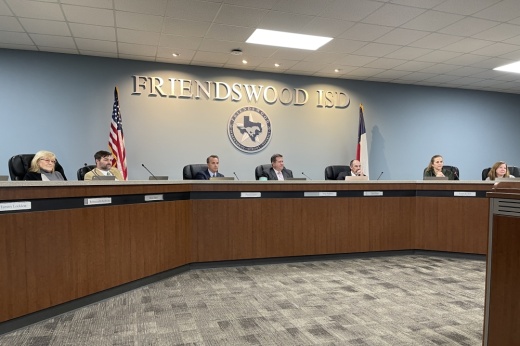The overview
Section 11.253 of the Texas Education Code requires school districts to create an improvement plan and set performance objectives based on data from the Texas Academic Performance Report, or TAPR.
FISD had the following six goals in their strategic plan:
- 1: A district-wide system will be developed to establish a culture of community service for all students.
- FISD hopes to do this by expanding its day of community service in April to capture additional groups of students and staff.
- 2: FISD will redefine the measure of student success based on its beliefs and call to action, which will involve designing what officials called more authentic assessments and feedback, as well as emphasize mastery of certain academic standards.
- 3: FISD will provide professional learning that it believes aligns with its beliefs and call to action, including more learning opportunities related to feedback and instruction.
- 4: FISD will partner with the community to help create real-world instruction and experiences.
- 5: FISD will look to have students engaged in what officials called authentic learning experiences in and beyond the classroom.
- 6: FISD will develop initiatives that promote strong character traits, emotional maturity and social well-being for each student. Curriculum and instruction will look to address to help prevent child abuse, family violence, dating violence, sex trafficking and suicide prevention.
FISD is also looking to fully integrate positive behavior interventions and supports, or PBIS, on all campuses, district officials said.
PBIS is designed to build support for teachers through behavioral practices, according to district documents.
PBIS is integrated in the following three tiers:
- Tier one: General academic and social, emotional, behavioral instruction and support provided to all students in all settings.
- Tier two: More target instruction or intervention and supplemental support provided to some individuals in addition to, and aligned with, tier one and the core curriculum.
- Tier three: Most intense instruction and intervention based upon individual need provided, in addition to, and aligned with, tier one and the core curriculum.
Tier one systems have been trained throughout the district to advise on how every student as a whole can be helped. Each campus has a team of eight to 10 teachers, chosen by campus administrators, that will guide training on PBIS, officials said.
To begin helping students that need tier two and three intervention, the district created Mustang Intervention Teams, or MITs. These teams are similar to Response to Intervention, or RTI, teams, which have been used to assist students for academic purposes, such as extra support for reading or math, officials said.
More details
Strategic plans for the entire district and every campus can be found on district agenda documents.





